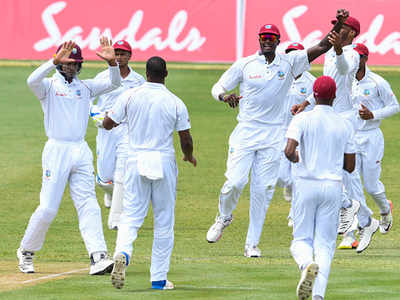
The Indian bowling department needs a major revamp, especially after a dismal show in the recently concluded Test series against Australia. The chorus is getting louder for prompt action. The need of the hour is to identify a few quality pacers – who can take Indian cricket forward.
Because, a world champion team will always have the best fast bowlers. Sadly, there is a huge dearth of talent in that area. Truth be told, there is practically no reason to be optimistic about the team’s bowling potential.
In such a bleak situation, what option does the team management have but to work on the present bunch of blokes? With no other great talent on the horizon the available bowlers have to be systematically being worked upon so be more persistent with their performance in games at the highest level.
This can’t be achieved after every miserable Test series. Indian bowling has been in the news for wrong reasons from the time a match-winner like Anil Kumble retired from Test cricket. Also, the fact that Harbhajan Singh and Zaheer Khan descended from their prime forms, has not helped the Indian cause either.
It’s a misfortune that the most experienced bowler in the incumbent line-up, Ishant Sharma, is still unable to lead by example after playing more than 60 Test matches. The lanky pacer from Delhi enjoys enormous support from his team management, BCCI and his state association. It’s not that Ishant is a bad bowler.
He is probably one of the best you have in the country if you judge him by what he can actually do with the ball. Everything about him qualifies him as a true blue pacer. He is tall, physically powerful, fast, can surprise the batsmen with bouncers and can bowl long spells. Then, why on earth is he not as successful as he should be?
Throughout the Test series, this was the same Ishant who looked quite menacing when he started pitching the ball in the right areas. But he wasn’t doing it consistently like his other colleagues in the team.
Take the example of Varun Aaron. He staked his claim from the very first Test match against Australia by producing some wicket-taking spells in the practice ties, which India had played just before the Test series began. He was fast and, at times, he was unplayable whenever the ball was pitched up to the batsmen.
From the time he started playing the Adelaide Test match, he became less affective as he bowled short of length. He got five wickets from two Test matches in Adelaide and Brisbane. In the next two Tests, Aaron was dropped from the playing XI.
But now the good news for Aaron is that the board is willing to invest on him. “Aaron is young and talented. He needs time to gain some more experience at the highest level. The board is keen to see him doing well in Test cricket. He has it in him,” are the words of an influential BCCI official, who didn’t wish to be named.
The board shares the same sentiments when it comes to Umesh Yadav, a pacer of repute in domestic cricket and also one of the four regular pacers selected for the World Cup team. He is as strong as Aaron and can generate pace.
Like most of the Indian bowlers, he also lacks discipline to maintain immaculate line and length. Whereas, even a newbie from the Australian team has these basics in place. Then why can’t the more experienced among the Indians?
Bowling with a single stump in the nets could appear to be a primitive way of training, but is still the best way if you ask the top bowling coaches in the world. How many times has Mohammed Shami been seen bowling to a single stump without a batsman in the nets?
He could still be doing it on his home turf in Kolkata when he is not traveling with the national team. His work in the nets should at least be reflected on the scoreboard. In the final Test match of the series when Sami trapped Australian captain, Steven Smith, right in front of the wicket, it showcased a perfect full length incoming delivery, which the best of batsman in the world could find it difficult to negotiate.
Why can’t Sami produce such deliveries consistently? Only the bowler himself can answer this question. Now that the four bowlers have their task cut out for the World Cup, beginning from February 14, they will have to raise their bar and remind themselves how important their roles are on the biggest stage of the world.
The pitches in the tournament will be flat ones and there would be teams who are already eying run feats against weak attacks. These Indian pacers have a serious job at hand. The upcoming tri-series, with hosts Australia, and England, shall be an ideal platform to test where our bowlers stand just before the World Cup begins. The countdown has begun.







